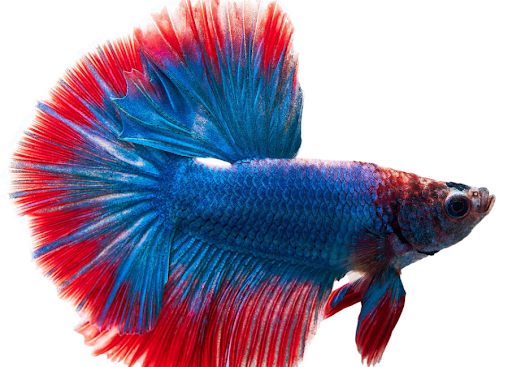Betta fish are one of the most common pet types, but that doesn’t make them any less wonderful to have as a companion! These shimmery little fishes come in several different varieties and can be found in freshwater or marine environments. With their friendly personalities and vivacious antics, bettas are one of the most popular small pets on the market today. If you’re planning on bringing your new friend with you when you head out on vacation, then this article is for you! We’ll help you avoid some common pitfalls so that your time together is happy, stress-free, and full of fun. Keep reading to learn how to travel with a Betta fish and enjoy your new pet while you’re away from home.
Table of Contents
What is the best way to travel with a Betta Fish?
Bettas are tropical fish that are happiest in tropical environments with warm, clear water. Because of this, you’ll need to take steps to make sure that the water you bring with you is at least 68°F. Betta fish thrive in environments that are consistently warm, so a little fluctuation in temperature will make them uncomfortable. Luckily, most airlines allow you to bring a small amount of hydration on board with you in your carry-on. So you can keep your Betta’s tank at its perfect temperature without having to worry about bringing enough water. You’ll also want to keep in mind that bettas are sensitive to air and light changes. So avoid bringing them with you at night or in the afternoon. Instead, opt for the middle of the day. And if you’re planning on bringing your Betta fish with you on a long trip, you’ll also have to keep their diet in mind. Betta fish are herbivorous, so they can’t tolerate the meat-heavy diets that many carnivorous types thrive on. So make sure you bring the right foods with you for your new friend.
Bettas need water that’s at least 68°F
Bettas need a warm water environment that stays between 68°F and 82°F. If the water in your Betta’s tank gets too cold, they’ll slow down and become less active. Too hot of water will also cause your Betta to become uncomfortable, and they’ll avoid swimming around in the tank. If you’re planning on bringing your Betta fish with you on a long trip, you’ll want to make sure the water in their tank stays at least 68°F. Keeping your tank’s water at the right temperature will help your fish stay healthy, energetic, and comfortable.
Bettas are sensitive to air and light changes, so avoid them at night and in the afternoon.
Bettas are sensitive to air and light changes. That means they’re likely to be uncomfortable or even stressed if you bring them with you while you’re sleeping or if you’re in a lighted environment. When you travel, avoid bringing your Betta fish with you when you’re sleeping or in a room with a lot of light. Instead, try to move these types of situations to the middle of the day. Bettas are usually more active in the middle of the day than they are at night or in the early morning before the sun comes up.
Bettas don’t do well in tight spaces or on hard surfaces. So keep your tank clean before you go.
Bettas don’t do well in tight spaces or on hard surfaces. They tend to swim and move around in their tank, and you don’t want to damage their fins by putting them in small spaces that force them to move around. So before you head out on your trip, make sure your tank is clean — and don’t leave any decorations in the tank. A dirty tank can cause your Betta to become stressed, which will make them more likely to escape.
Bettas can’t tolerate extreme temperatures when travelling, so bring everything you need for your trip.
When you travel with your betta fish near me , you’ll want to make sure they have all the things they need to stay happy and healthy while you’re away. You’ll need a new water source and at least a 5-gallon tank. You’ll also want to make sure your water is at least 68°F before you go. You’ll also want to bring any food you’ll be feeding to your Betta. And, most importantly, you’ll want to make sure you bring enough clean water for your Betta to swim around in. If your tank is too small or you’re travelling with a type of water that isn’t suitable for Betta fish, your fish will be stressed and may escape.
Bettas shouldn’t be shipped in live fish tanks. So make sure any fish tank you buy is equipped with a heater.
Bettas shouldn’t be shipped in live fish tanks. Bettas are tropical fish and will die if they’re shipped in a cold truck or are shipped in a tank where the temperatures are too low. If you purchase a tank when you buy your new Betta fish, make sure it’s equipped with a heater. Bettas usually enjoy an active lifestyle. They like to swim around, eat, and breed. So, if your Betta tank isn’t big enough, they’ll be stressed out and may escape.
Don’t forget to feed your Betta while you’re away!
Betta fish are herbivorous, so they can’t tolerate the meat-heavy diets that many carnivorous types thrive on. Instead, you want to feed your Betta a diet of live foods and vegetables. For example, you can feed your Betta:
- Crushed dry pellets
- Vinegar
- Brine shrimp
- Crickets
- Yogurt
- Peas
- Papaya
- Different vegetables
Conclusion
Bringing home a new pet like a betta fish can be an exciting experience, but it can also be a bit daunting. There are so many things to consider when it comes to caring for a new pet and travelling with one. Luckily, once you’ve read our guide and prepared properly, you should have an easy time travelling with your new betta fish companion. Bettas are one of the most popular small pets on the market today. With their friendly personalities and vivacious antics, bettas are one of the most popular small pets on the market today. If you’re planning on bringing your new friend with you when you head out on vacation, then this article is for you! We’ll help you avoid some common pitfalls so that your time together is happy, stress-free, and full of fun. Keep reading to learn how to travel with a Betta fish and enjoy your new pet while you’re away from home.





